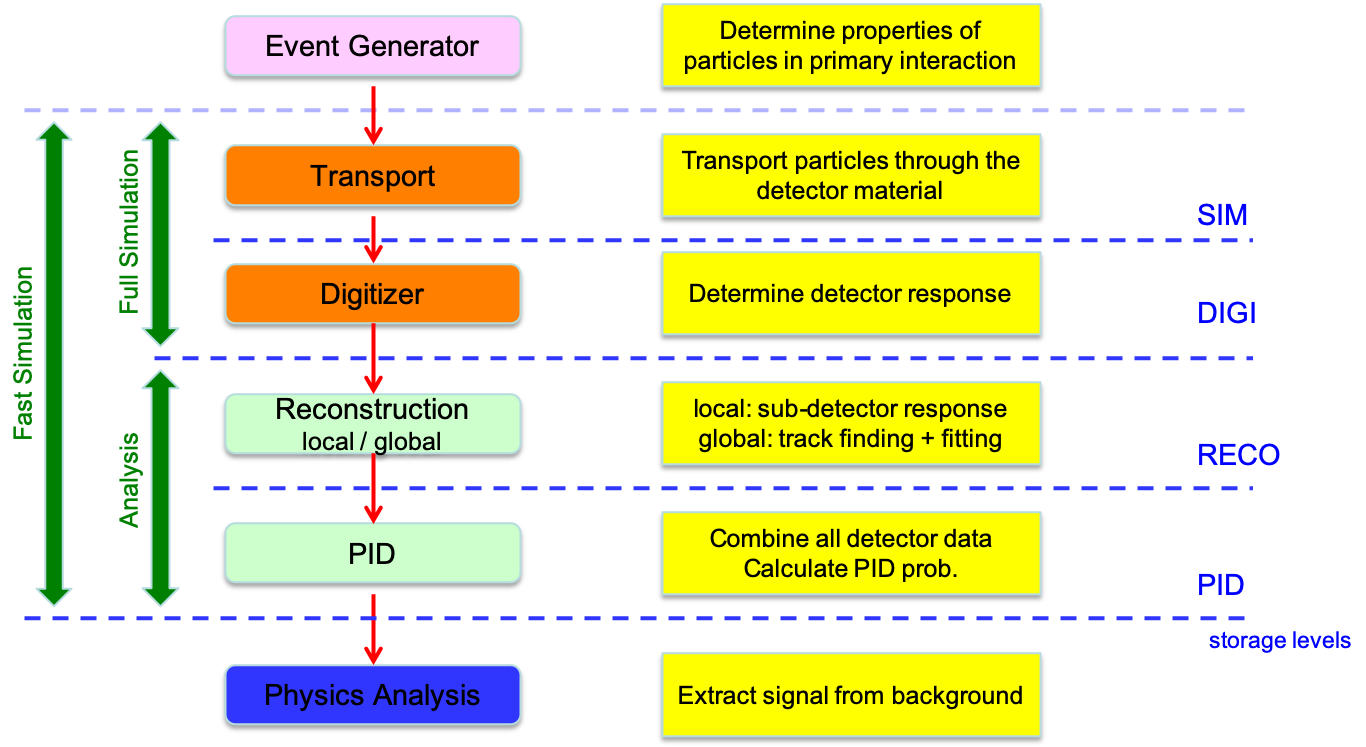Running PandaRoot¶
Contents:
Running the software encloses a lot of algorithms and packages. A comprehensive overview is given in Running Sequence. For a quick way to set up everything it is recommended to familiarize with the MasterTasks. Developers also should have a look at the useful logging possibilities in Using the Logger from Fair.

Event Generation¶
First stage is the event generation. It simulates the interaction of the antiproton beam with the target. It does not include any interaction with the PANDA detector which is important for the decay of long living charged particles like hyperons.
Transport¶
In the second stage the particles generated via the event generator are transported through the detector. This is done via either Geant3 or Geant4 which can be seamlessly selected via VMC.
In this stage the particle properties like their decay length, interaction with the detector material and fields are taken into account. It creates a realistic picture about the processes taking place inside the detector. The output of this stage is a Monte Carlo truth list of generated particles with their point of origin, momentum, charge and creation time, and, for each sub-detector, a list of points where the particles have interacted with sensitive detector material, containing the time, position and lost energy at that point.
Digitization¶
In the digitization stage the detector responds to the deposited charge in the sensitive volume is simulated. In contains both the sensor properties as well as the readout electronics features of a subdetector. The output should be a data stream matching with the one generated by the DAQ of the real PANDA experiment.
What is simulated and how detailed the simulation is, differs for each sub-detector.
Reconstruction¶
The reconstruction is subdivided into two stages, the local reconstruction and the global reconstruction.
Local Reconstruction¶
The local reconstruction is operating on the sub-detector data independently from each other and is part of the sub-detector code. It translates the digitized detector data back into physical quantities like the translation from fired detector channel into a position in the detector, or an ADC value back into an energy.
Global Reconstruction/Tracking¶
Global reconstruction in PANDA mainly means reconstructing the track of charged particles from the measured hit points in the tracking detector. This process happens again in two stages. The firs one is the track finding and pre-fitting stage. Here the hit points are sorted into groups of hits which could belong to one track and a rough estimate of the track parameters like charge, momentum and position on track are calculated. In the second stage a Kalman filter is used to improve the track parameters by taking also energy loss and multiple scattering into account which is typically neglected in the pre-fitting stage.
Particle Identification¶
The last stage before the analysis is the particle identification (PID). Here the tracks of the global reconstruction are combined with the measurements of the PID detectors and the EMC and a probability for each stable particle species is calculated (e, pi, mu, K, p). The complete information about one particle is then stored in a charged candidate. For those cluster in the EMC where no track is pointing to an addition neutral candidate is created.
Analysis¶
A analysis of a simulated physics channel or background data is performed using the Rho package.